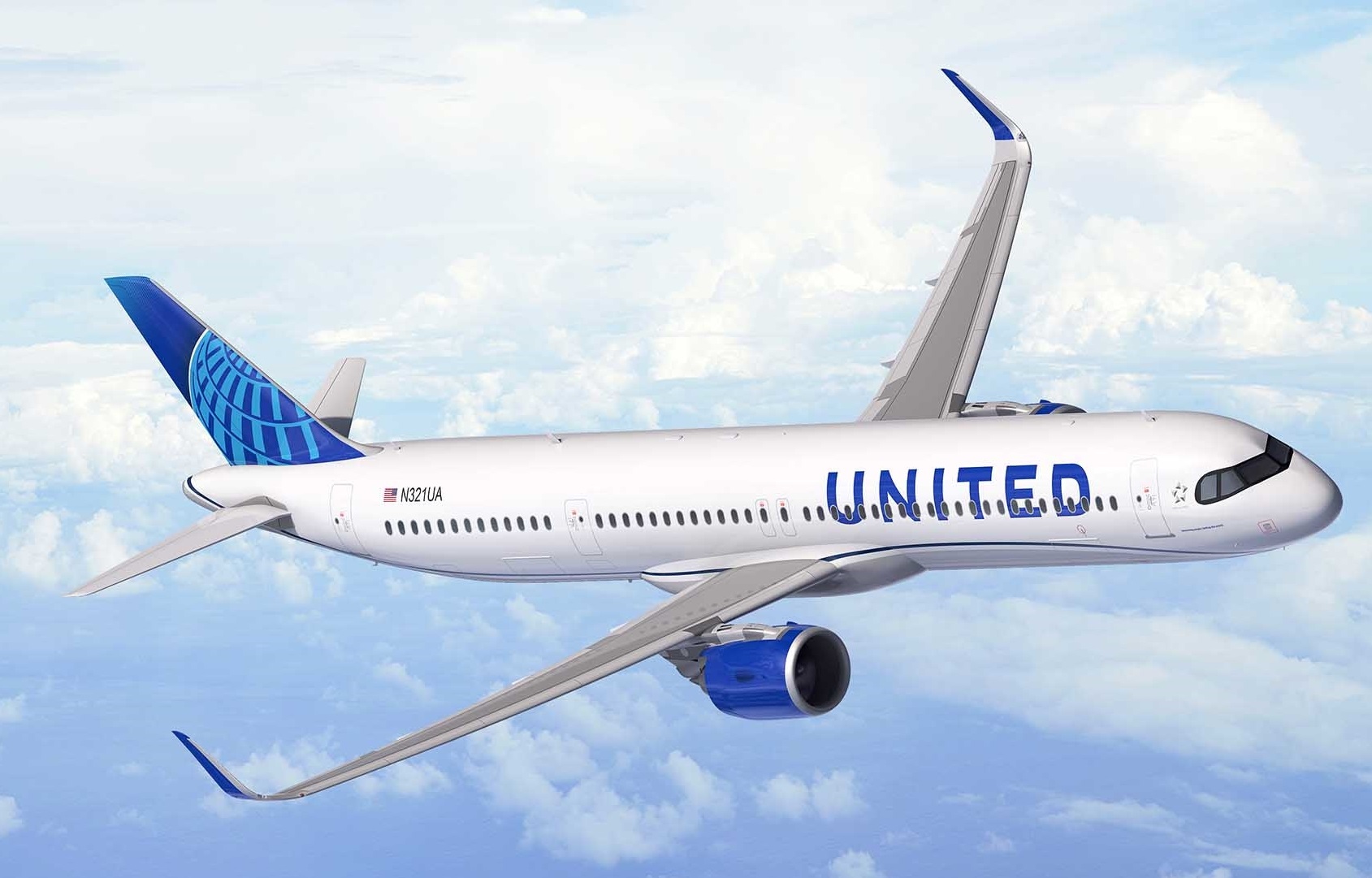Leeham News and Analysis
There's more to real news than a news release.
United orders 50 A321XLRs
Dec. 3, 2019, © Leeham News: United Airlines today announced an order for 50 Airbus A321XLRs.
The airplane has an advertised range of 4,700nm (5,400 statute miles), or a nine hour flight.
UAL will replace its aging Boeing 757s on a one-for-one basis beginning in 2024.
The XLR’s targeted entry into service is 2023.
Preferred 737 MAX return to service timeline for Airlines
Subscription Required
By Vincent Valery
Introduction
Oct. 21, 2019, © Leeham News: As Boeing sorts out final requirements with regulators for the 737 MAX return to service, preparations to resume deliveries are in full steam.
The company is hiring scores of temporary workers to return grounded and built but not yet delivered airframes. A note from Alliance Bernstein estimates that Boeing will be able to hand over 25 aircraft per month on top of those that come off the assembly line.
After taking hefty losses and having lost its most robust cash flow source for almost a year, Boeing will want to hand over as many aircraft to airlines as fast as possible.
Do all 737 MAX customers, likewise, want their aircraft back in service as soon as possible?
Summary
- National regulators will drive return to service timeline;
- Passenger demand variations;
- 737 MAX exposure by region;
- Demand peaks might dictate who flies first;
- Maintenance, compensation, and other considerations.
The time for a 767RE passenger model has come and gone
Subscription Required
Introduction
Oct. 14, 2019, © Leeham News: Boeing is reconsidering a previous idea to re-engine the 767 with GEnx powerplants, Flight Global reported last week.
The idea was run up the flagpole, so-to-speak, in 2017.
At that time, the 737 MAX was just entering service. There was, of course, no hint of any turbulence on the horizon.
The business case for the New Midmarket Aircraft was difficult even then. So why not look at a 767RE and restarting the 757 line, also up upgrades?
Boeing being Boeing, it looks at everything. It ruled out restarting the 757 line (the challenges would have been pretty daunting).
The 767 got more studious traction, including simply restarting the passenger line and providing a really cheap acquisition. A 767RE, however, was viewed as too complex under the circumstances and it would compete with the 787.
American Airlines and United Airlines were actually interested in the airplane restart.
Summary
- B767F-RE may be to counter A330-900F approach to a major cargo airline.
- B767P-RE likely would be met favorably–by Airbus.
- Re-engining 767 repeats 737RE experience.
Airbus holds the line on A350 production rate
Subscription Required
Introduction
Sept. 4, 2019, © Leeham News: Airbus’ decision a few months ago to keep the A350 production rate at 10/mo appears to be a wise one, considering that there is a small production gap in 2022 but increasingly large ones from 2023.
Boeing boosted rates this year of the 787, which competes with the A350-900 but not the -1000, to 14/mo. Boeing is sold out at this rate in 2020 and 2021, but has a big gap in 2022 and larger gaps thereafter.
in 2020 and 2021, but has a big gap in 2022 and larger gaps thereafter.
Both companies bank on a splurge of orders early next decade to fill the production gaps. Each says there will be a retirement surge beginning in about 2022.
Airbus offers the A330neo and A350. Boeing pitches the 787 and 777X—with a combined production capacity of 35/mo or 389/yr at current rates.
Summary
- Skyline quality is generally good, but weak spots and one blue-chip order bear watching.
- Some significant production gaps emerge in 2023.
- A330-900 competes with A350-900 for orders.
Pontifications: Boeing can’t catch a break
July 15, 2019, © Leeham News: Boeing can’t catch a break.
Some may argue it doesn’t deserve one, given what’s come out about the 737 MAX development. And the sloppy production of the 787 at the Charleston (SC) plant. And the FOD issues with the KC-46A at the Everett (WA) plant.
To be sure, Boeing has gotten a lot of bad press it’s deserved. But last week, two pieces of news had connections to the MAX that were (1) overwrought and (2) unwarranted.
Paris Air Show Orders, Day 1
June 17, 2019, (c) Leeham News: Here are the orders and commitments for Day 1 of the Paris Air Show, courtesy of Airfinance Journal.
E175-E2 prototype in production, first flight by year end
May 28, 2019, © Leeham News: The first E175-E2 prototype is now in production at the Embraer plant here at Sao Jose dos Campos, Brazil, despite having no firm orders and only a single conditional order for 100 aircraft from a US airline that so far can’t use the airplane.
The pilot union contracts contain a clause that prevent the only customer for the aircraft in  the world from using it because the take-off weight exceeds the 86,000 lbs specified in the contract.
the world from using it because the take-off weight exceeds the 86,000 lbs specified in the contract.
Embraer designed the airplane with the hope the so-called Scope Clause would be relaxed in contract negotiations this year and next by pilots for American, Delta, United and Alaska airlines. It’s become clear that relief is unlikely.
Boeing suppliers ramp up schedule for MAX: 52/mo by July, 57/mo by August
April 29, 2019, © Leeham News: Boeing reduced the production rate on the 737 line in mid-April from 52/mo to 42/mo in response to the grounding of the airplane by regulators worldwide.
The company and others said they didn’t know how long the airplane would be grounded.
But Boeing told suppliers to keep producing parts, components and the fuselage at rate 52.
The announcement was made April 5. At the same time, Boeing gave suppliers the rate ramp-up schedule.
Impact of MAX grounding emerges with earnings reports
Subscription Required
Introduction
April 29, 2019, © Leeham News: With first quarter financial results beginning to be reported, the impact of the grounding of the Boeing 737 MAX is beginning to emerge.
The first out was from Boeing itself, followed by a few of the airlines that operated the MAX before it was grounded March 13.
Boeing reported the grounding cost it about $1bn, for just the two weeks the airplane has been on the ground.
Norwegian Air Shuttle, which was using the MAX on new trans-Atlantic services, lost millions of dollars.
American Airlines will take a $350m hit from the groundings.
Southwest Airlines surprised many with a stronger-than-expected first quarter despite having 34 MAXes on the ground and a cost of $200m.
Air Canada extended the removal of its MAX fleet from its schedules another month, to Aug. 1.
Summary
- JP Morgan doesn’t predict deliveries resuming until the fourth quarter.
- The investment bank sees 200 MAXes in inventory accumulating and cash losses of $1.5bn per month while the plane is grounded.
- Wall Street hopes that 2020 will be a normalized year.
- If simulator training is required by regulators before the MAX can return to service, JP Morgan estimates more than 4,400 pilots need to be trained.







